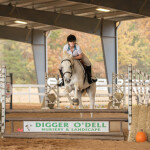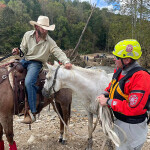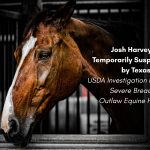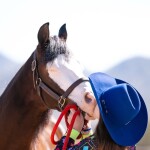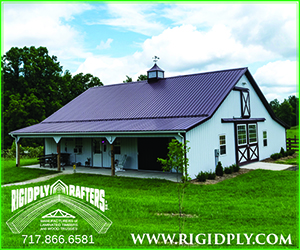The warmer weather has arrived. Unfortunately, with the warmer weather comes every equine owner’s least favorite visitor: flies.
There are a variety of flies that agitate horses, livestock species and humans. If not managed correctly, flies can cause potential health issues, some serious, to all animals (including humans). Flies are one of the primary vectors for life-threatening diseases. While there is no method to get rids of flies 100% at your barn, there are ways to reduce the “buzz” to your horses, other animals and people.
Types of Flies
Flies come in a range of species. The most common found in horse barns and pastures include:
- Black fly (Simuliidae)
- Cattle Grub (Hypoderma bovis or H. lineatum)
- Common Bot Fly (Gastrophilus intestinalis)
- Stable Fly (Stomoxys calcitrans)
- Horn Fly (Haematobia irritans)
- Biting Midge (Culicoides)
- Face Fly (Musca autumnalis)
- House Fly (Musca domestica)
- Horse Fly and Deer Fly (Tabanidae)
These flies are usually most active from April to October. Some of these flies (horse fly, deer fly, black fly, biting midge, stable fly, horn fly, house fly) feed on blood which can transmit life-threatening diseases such as Equine Infectious Anemia (EIA) or Pigeon Fever. Other flies (cattle grub, common bot fly) can spread internal parasites while some (face fly) just feed on animal secretions, but cause serious annoyance.
Fly Management Steps
To get rid of flies on their own, horses will shake, swish their tails, rub their faces on fence lines, stomp their feet, turn their heads to “bite” themselves or roll in dirt/mud. As horse owners know, flies can harm horses by transmitting viruses and diseases, cause welts or skin irritations at bite sites, cause hoof damage from excessive stomping and just overall be a source of discomfort. Fortunately, there are multiple steps horse owners can do to reduce fly irritates.
Good Sanitation
Keeping your facilities dry and clean is the most important fly and pest management step. The basic aim for all sanitation is to reduce or eliminate fly larval development sites. Fly larvae can develop in multiple sites such as where manure, plant debris and water can build up which can form ideal breeding grounds for pests.
Manure and soiled bedding in pasture shelters, stalls, feeding and water areas should be removed regularly and manure piles should be managed appropriately. Efficient draining methods should also be applied to all structures and high traffic areas to reduce excessive moisture.
Human food and trash should also be monitored. All human food (especially perishable) should be kept in the barn’s respective break room or kitchen and trash should be taken out regularly and covered with a lid as often as possible.
Turnout and Pasture Management
Run-in shelters should be kept away from wooded areas as horse and deer flies are most active, especially if there is a water source. Having a larger pasture space will also allow horses to naturally move away from biting flies since some flies are only active in certain areas of pasture. Turning horses out at night can also reduce biting since horse and deer flies are typically more active during daylight.
Chemical Control
Various chemical control techniques are available to horse owners. This includes fly sprays, fly repellent ointment and fly traps. Most horse owners use a combination to reduce fly to a minimum as possible.
Fly sprays should be applied to horses on an everyday basis, especially to horses on 24/7 turnout. Sprays can kill adult flies at the time of application and it is important to have full body coverage. Better coverage can be achieved by applying spray to a brush or mitt. The only disadvantages to spray application is that is can be labor intensive depending on how many horses you have and the effect is only short-term. Please remember to read the label on all fly spray bottles to ensure appropriate application and not to apply to other animals the spray is not suited for.
Fly ointments can also be applied, especially around horse’s eyes, ears, underneath their chins and around surface wounds. The disadvantage is that application needs to be done daily and the price of ointment can add up.
Fly traps include sticky paper, box traps, hanging traps or canopies. These traps include insecticides or soapy water that drown flies. It is important that the placement of these traps is taken into consideration and proper placement in pasture or barns might take some trial and error. Horses and other livestock should not be able to interfere with traps but traps should still be placed where flies are a nuisance. Traps out in pastures should be placed in sunny areas and away from buildings or other obstructions that could interfere with fly vision. Traps require regular maintenance and should be changed out/replaced every week so newer captured flies do not use previously caught flies to escape.
Fly Protection Products
Fly sheets, boots and masks are great barriers, especially in sensitive areas. Please be sure your horse’s sheet, boots and masks fit appropriately as too loose-fitting barriers can easily come off and too tight will be uncomfortable. Try and purchase barriers in bright colors so in the event your horse does loose their barrier, you can easily spot it in the pasture.
For further questions about fly management contact your county’s Extension office. UT-TSU Shelby County Extension can be reached at 901-752-1207 during normal business hours Monday through Friday 8am-4:30pm CST.




